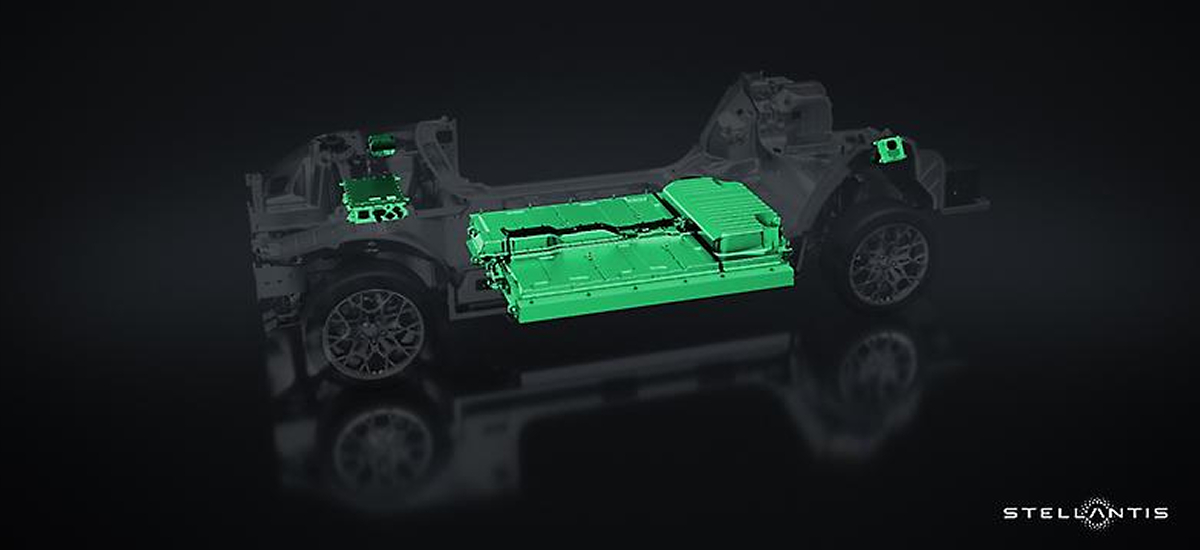
 Your Credit Estimate
Your Credit Estimate
 Your Credit
Your Credit
Your zip code helps us provide you with the most accurate vehicle pricing and vehicle availability.
We estimate your credit score to give you an idea of your monthly payments. To get an accurate payment amount, complete our credit application by clicking the Start Credit Application button below.
start credit application
With rival automakers releasing new battery-electric vehicle (BEV) platforms like the Uni-Wheel from Kia and the Electric-Global Modular Platform, or E-GMP from the Hyundai Motor Group, Stellantis can’t be outdone. The fourth largest automotive group in the world, it’s time to start making good on its promises of 75 new BEVS by 2030, according to the Dare Forward 2030 business strategy Stellantis released in 2022, along with many other automakers talking about electric plans for the rest of the decade. Working on a new series of BEV platforms for upcoming models, in 2023, Stellantis unveiled the STLA Medium platform, and this year (2024), it unveiled the STLA Large Platform.
STLA Platforms are still in development, but the automotive group announced their plans for this in 2022. A total of four platforms were initially announced - Small, Medium, Large, and Frame – and we got a little preview of the interior of these platforms with the STLA SmartCockpit during the 2023 Consumer Electronics Show. A combination of software that runs the vehicle (STLA Brain) and employing next-generation vehicle technologies, such as STLA AutoDrive for autonomous driving, the SmartCockpit could become a digital lounge for consumers to take their lives on the road.
As for the STLA Large platform, this BEV platform is being designed for class D- and E-vehicle segments. The former is known for large-family and mid-size cars, typically sedans, hatchbacks, and coupes. The E-vehicle segment goes a little larger, but mainly focuses on executive and luxury cars. STLA platforms can give Stellantis a large range of vehicle types to work with. The flexibility of STLA platforms is the main selling point, with future BEV models said to be able to cover a full spectrum of vehicle types, from cars to crossovers to SUVs.
“Our goals for our STLA platforms are ambitious, but this is what our customers need from us today…Creating a family of vehicles from a well-engineered set of components that is flexible enough to cover multiple vehicle types and propulsions, overperforming any of our current products, will address each of our iconic brands’ customers. The flexibility and agility of this platform is its hallmark and will be a driving force for our success in the shift to electrification in North America.” - Stellantis CEO Carlos Tavares
Able to be designed for D- and E-vehicle segment types, the STLA Large platform has a range estimate for its dimensions. These include 187.6-201.8 inches in length, 74.7-79.9 inches in width, and 113.0-121.1 inches for the wheelbase. The ground clearance ranges from 5.5 to11.3 inches, leading to the possibility of off-road vehicles as well. Stellantis has already announced the use of STLA Large platforms to be used first in the North American market on Dodge and Jeep® brands, so it’s very likely the upcoming Jeep Wagoneer S BEV will be built on the STLA Large platform. We still have yet to see anything new from Dodge eMuscle aside from the Dodge Hornet plug-in hybrid.
Designed to be powerful and offer high performance, the STLA Large platform targets an overall range of 500 miles for sedans, and is said to be able to handle 400-volt and 800-volt electric architectures. Able to be configured for front-wheel-drive, rear-wheel-drive and all-wheel-drive layouts, Stellantis is eager to prove that BEVs can be high-performance cars, already claiming that the platform has the potential to outperform any of the existing Hellcat V8 engines. The auto group has already claimed an acceleration from 0- 62 mph in the two-second range.
Can BEVs be classified as high-performance vehicles? Stellantis sure thinks so. What do you think? Join the discussion on NowCar social media.